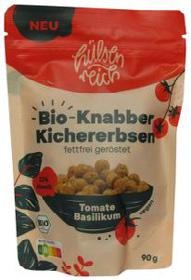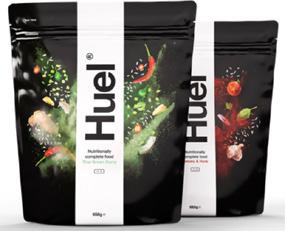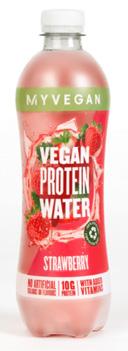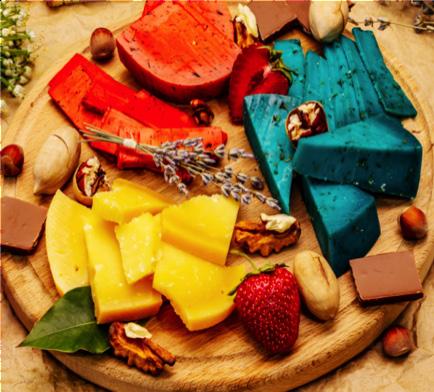Protein Report 2022









Consumers are looking to maximize their health and wellbeing, which has spurred a rise in demand for functional ingredients that are beneficial to health. Market research from FMCG Gurus shows that 44% of global consumers are looking for fortified and functional food and drink more frequently, and one specific ingredient they are increasingly seeking is protein.1
Consumers also feel they are relatively educated about protein sources; research conducted by FMCG Gurus in 2021 found that 62% of global consumers say that they are aware of different protein sources.2

Proportion of consumers who say they feel aware about different protien sources (2021)
The mainstream appeal of the protein trend has led to a boom in product development using a wide range of protein ingredients. However, each protein has its own functional attributes, nutritional qualities, sensory characteristics and price point that manufacturers must consider during the product development process.
Whey protein remains a popular choice in sports nutrition products as it is a complete protein, containing all nine essential amino acids. It has a Protein Digestibility Corrected Amino Acid Score (PDCAAS) of 1.0, meaning it is well digested by the body. With the growth in popularity of plant-based products, some everyday dairy brands are drawing attention to the nutritional benefits of dairy protein
Greek yoghurt success story Chobani launched a yoghurt called Chobani Complete, telling consumers that the product ‘is advanced’ because it is a complete protein that naturally contains all nine essential amino acids.3
Popular diets such as the ketogenic diet, which advocates a high intake of fat, medium intake of protein and low intake of carbohydrates, and the paleolithic diet, which promotes the diet of prehistoric hunters and gatherers, have popularised meat protein in snack products. Followers of the paleo diet in particular may be looking to avoid so-called ‘ultra-processed’ products, and meat is seen as a natural whole food. Bone broth, beef jerky and biltong are just some examples of meat-based products that have grown in popularity in recent years.4
Belief in the wholesome nutrition of meat and bone broth has seen such products expand to other categories, such as baby food. In the US, healthy baby food brand, Serenity Kids, launched a range of purees made with bone broth sourced from regenerative farms. Serenity Kids tells parents that babies’ stomachs contain all the enzymes necessary to digest meat, and that meat is a more efficient source of protein than any other food.5
Soy protein also has the nine essential amino acids, giving it the best nutritional profile among plant proteins. Soy has a wide range of functionalities and is one of the best-known plant proteins among consumers. Danone’s Silk Ultra is a soy-based drinking milk that provides 20 g protein, and the company’s website tells consumers: ‘Many plant-based proteins aren’t a source of complete protein, but soy is! That means Silk Ultra is too'.6
Pea protein is an on-trend ingredient, used in some high-profile products such as Beyond Meat’s Beyond Burger. Pea protein is versatile, does not have to be listed as a major allergen, and formulators have overcome most of the aftertaste issues that previously dogged it. Pea protein is not considered to be a ‘complete’ source of protein, however, and so brands looking to use it in categories where nutrition is very important – such as sports nutrition products that are targeted towards everyday athletes – may consider blending it with other plant-based sources to achieve an optimal amino acid profile.
Microalgae protein can be high in protein, insoluble fibre and many micronutrients. Chlorella vulgaris contains around 59% protein and all essential amino acids in high concentrations.7 Algal protein offers functionality, such as gelling and emulsification properties, and advances have been made in removing the strong ‘fishy’ odour and deep green colour, meaning microalgae powders today can have a neutral taste and white colour. Naturally colourful algae can be used to add colour to a final product application, such as yellow for egg alternatives and red for meat alternatives. Algal biomass, grown in closed-system fermentation tanks, is also highly sustainable. While soy’s farm-to-fork journey takes between seven to nine months and beef takes years, microalgae ingredients can be grown and produced in one week.8
Recent plant-based protein ingredients that offer further options for product developers include mung bean protein,9 which EFSA scientists recently approved as a novel food, canola (rapeseed) protein10 and barley protein from spent brewer’s grain.11

Follow our business channel on Linkedin for insights into our portfolio, product innovations and creative collaboration with customers worldwide.
Advances in precision fermentation and cell-based agriculture are paving the way towards producing animal-based proteins without the animals. US company Clara Foods has launched a cell-cultured pepsin, offering the same functionality as pepsin derived from pigs’ stomachs12, while Perfect Day’s dairy proteins, made without dairy cows, are being used in Brave Robot‘s animal-free dairy ice cream.13 Other companies are making food out of thin air; Finnish start-up Solar Foods and US company NovoNutrients use carbon captured from the atmosphere as a feedstock for a protein-rich microbial biomass that can be transformed into a food-grade nutritious protein powder. 14,15 If such ingredients are accepted by consumers and become mainstream, they promise to revolutionise the traditional agri-food industry.
Brands must be mindful of the relevant regulations that permit them to make a health or nutrition claim on protein content. In the EU, a product may claim to be a ‘source of protein’ if at least 12% of the energy value of the food comes from protein. To claim the product is ‘high in protein’, at least 20% of the energy value must come from protein. Brands must respect these values even if their claim uses a different wording that is likely to have the same meaning for the consumer.16
Despite these clear-cut rules (in Europe at least), almost half (47%) of people surveyed by FMCG Gurus said they are not fully trusting of health claims made on high protein snacks. Many consumers may feel suspicious of brands promising ‘magic bullet’ solutions, particularly in an ongoing pandemic environment, the market research company warns.17 Manufacturers can counteract this by communicating clearly and offering scientific evidence to support any claims made on packaging, such as via QR codes that link to the brand’s website.
The protein trend is so entrenched that even ‘budget’ brands have launched high-protein products. However, adding protein to a product still allows manufacturers to adopt a more premium positioning, and many consumers are willing to pay for the added nutritional benefit. FMCG Gurus questioned consumers from 25 countries and found that that 55% would pay more for a product that is high in protein across multiple traditional snack types.18
Choosing the right protein format will allow brands to make a protein claim without negatively impacting the taste and texture of the product. Protein isolates and concentrates are high in protein, containing around 80% to 90%, and are ideal for small product formats such as snack bars. However, they can bind the available moisture in the matrix, making the bar dry or tough; therefore, adding hydrolysed protein can keep the texture moist and soft.19
Hydrolysed protein is ideal for clear beverage applications but can have a bitter aftertaste that limits uptake. Texturized proteins, which tend to contain around 70% protein, are ideal for meat and dairy alternatives as they have usually been extruded, providing bite and a fibrous texture. They can be combined with protein concentrate or isolate to boost the protein content of the final product.20
EU rules allow brands to make three nutrition claims for protein; that it contributes to the growth and maintenance of muscle mass; the maintenance of normal bones; and the normal growth and development of bone in children.21
Such proven health benefits for bone maintenance and muscle mass have a general appeal but they may resonate particularly strongly with athletes and seniors, who suffer from age-related muscle loss, known as sarcopenia. After the age of 30, people begin to lose as much as three to 5% of their muscle mass with each passing decade, and most men will lose about 30% during their lifetime.22
Protein is one of the most important ingredients to maintain a high quality of life, according to Sandra Einerhand, founder of Einerhand Science & Innovation.23 However, brands creating high-protein products that are targeted towards seniors should be aware that people’s taste perception begins to change with age, and so product formulation should reflect this with appropriate flavours and flavour intensity.

In addition to bone and muscle benefits, protein enjoys many other health benefits in consumers’ minds and brands can leverage these positive associations. For instance, all products in British retailer Waitrose’s vegan Plantlife range bear the slogan ‘Helping you live holistically’ and the recently launched Plantlife bean burgers inform consumers that the product is a good source of protein, which helps muscles grow.24
The COVID-19 pandemic has pushed health to the forefront of most people’s minds, with interest in immune health increasing considerably. Each stage of the body’s immune response relies on the presence of many nutrients and, according to the Harvard School of Public Health, protein, including the amino acid glutamine, has been identified as critical for the growth and function of immune cells.25

The number of people skipping meals is on the rise, resulting in fragmented eating patterns. According to FMCG Gurus, nearly one-quarter (24%) of global consumers skip breakfast at least three times a week and 26% skip lunch three times a week.26 However, people still need to nourish themselves throughout the day and so many are turning to healthy snacks to give them a nutrient boost and energy fix.
What’s more, many consumers are beginning to expect snacks to be healthy rather than seeing this as an add-on. Sixty-seven percent of global consumers said that they expect snacks to offer a nutritional boost.27
“This shows that snacks are no longer deemed an occasional moment of indulgence where little-to-no attention is paid to nutritional intake. Instead, people are being more attentive to the ingredients in products and evaluating the healthiness of the products that they turn to,” says FMCG Gurus.28
Proportion of consumers who say that high protein claims make a snack healthy (2021)
Source: FMCG GurusThe short, one-time eating occasion offered by snacks also means consumers like to have a wide range of choices in terms of flavours. One Innova survey found that between 35% and 40% of consumers say they prefer “strong, novel and varied flavours” in their snacks while 20% to 25% prefer “mild, light and traditional tastes”29. This suggests the importance of variety in the snack aisle to capture all preferences.
According to Carole Bingley, senior associate principal scientist at Reading Scientific Services Ltd (RSSL), protein bars originated in the sports nutrition sector but have become more mainstream, and product flavours and positioning reflect this:
“Early products were for dedicated gym-goers for whom taste was less critical. However, protein bars are moving more into the confectionery area and coming up with some quite interesting flavour combinations, such as birthday cake, salted caramel, and chocolate orange,” she says.
“Other products carrying protein claims are more luxury, indulgent products, such as a super granola product, luxury protein chocolate, and cookies.”30
Germany’s Hülsenreich makes Organic Tomato and Basil Flavoured Chickpeas for Snacking with 22% protein. According to the company, the chickpeas are a perfect snack for the office, after sport, on the couch, or added to soups and salads.

Source: Mintel GNPD

In Serbia, Delhaize makes savoury pumpkin protein bars under its Nature's Promise Healthy Life brand. Made with sunflower kernel and pumpkin protein, oatmeal, spinach powder and spices, one bar provides 11% of the recommended daily amount for protein.
Source: Mintel GNPD

In Austria, Veganz makes an organic almond crisp & white chocolate protein bar, containing 25% protein from a blend of rice, pea, soy and pumpkin seed protein. The bar also contains roasted almond pieces and protein crispies made from rice flour and sunflower protein for texture.
Source: Mintel GNPD
One nascent category that is experiencing strong growth is baby snacking. New product development in this sub-category enjoyed a compound annual growth rate (CAGR) of 33% globally over the 2015-2019 period, according to Innova.31 Products with a clean label and nutrient-packed ingredient list are crucial to attract parent shoppers and protein, which is associated with bone and muscle development, is a welcome addition.

US brand Nurture adds organic pea protein to its Happy Tots Fiber & Protein oat bar with spinach and apples. One bar provides 10% of a baby’s recommended daily allowance for protein.

FMCG Gurus research conducted in 2020 found that 43% of consumers associate protein with helping aid weight loss, presumably because of the related satiety-enhancing benefits.32
Industry players have identified that meal replacements tend to appeal to three consumer types.33 The first group includes those who want to lose weight, meaning the satiety aspect of the product is important. The second group is made up of individuals who have a fast-paced lifestyle and struggle to find time to eat a balanced meal. The third group is made up of everyday athletes and bodybuilders who need to increase their nutrient intake to fuel their activities.
For years, meal replacements and nutritional drinks tended to be available only in sweet versions with chocolate, vanilla and strawberry flavours dominating the category. However, brands have begun to innovate with new flavours and formats to spark consumer interest and respond to evolving needs of the three different consumer groups. Sports nutrition brands have also embraced the trend for plant-based eating with product launches that use plant proteins, such as pea, soy, hemp, and nuts.
UK brand MyProtein launched two limited edition flavours for its Impact Whey Protein powder – Pumpkin Spice and Cinnamon Danish.

Source: Mintel GNPD
UK brand Huel has a range of savoury meal replacements in its Hot & Savoury range, such as Mexican Chili and Tomato & Herbs. Each pack provides 24 g of plant-based protein from pea protein, 24 vitamins and minerals, and coconut medium chain triglycerides (MCT).

Source: Huel

Duria Global launched a protein powder mix under its Naduria brand in Germany made of just three organic ingredients: hemp protein, macadamia protein, and almond protein, providing 61 g protein per 100 g product.
Source: Mintel GNPD
In 2020, the ready-to-drink (RTD) protein beverage market was valued at $1.34 billion, and it is expected to rise by 7.72% (CAGR) between 2021 and 2026, according to Mordor Intelligence.34
Traditionally, protein fortified RTDs have been targeted towards sports nutrition consumers. However, recent product launches show how this sub-category is diversifying to include water, soda and teas for an everyday protein and hydration boost.
Online sports nutrition brand MyProtein makes a vegan clear protein water, describing the drink as a light and refreshing alternative to creamy protein shakes. Available in lemon & lime and strawberry flavours, each drink is made with 2.5% hydrolysed pea protein and vitamins, providing 10 g protein per 500 ml bottle.

Source: MyProtein
In Austria, the retailer Spar makes a high protein raspberry and rhubarbflavoured soda with hydrolysed pea protein that is also free from sugar.

Source: Mintel GNPD
Consumer awareness of the sustainable credentials of plant-based protein is growing but it seems that many remain unconvinced. Forty-five percent of Polish consumers say that swapping dairy-based yoghurts or yoghurt drinks for plant-based ones helps the environment – but this suggests that 55% do not necessarily agree.35
Manufacturers can do more to communicate about this, as well as ensuring that their products truly are more sustainable, both in terms of ingredient sourcing and packaging. In Europe and the US, product innovation in protein beverages is attempting to address consumers’ sustainability concerns.
US brand Take Two makes barley milk using spent barley leftover from the beer brewing process. It says that by upcycling this ingredient that would otherwise have gone to waste or to lower-value applications, its products have lower carbon footprints.


Source: Mintel GNPD
In 2021, Nestlé launched Wunda, a pea proteinbased drinking milk that is certified carbon neutral by the Carbon Trust.
Source: Mintel GNPD






COVID-19 has spurred an interest in local ingredients, created opportunities to link protein to its immune health benefits, and amplified the importance of trust and traceability for animal proteins.36
Seventy percent of new human diseases in recent history have originated from animals, according to the United Nations’ Food and Agriculture Organization (FAO).37 The zoonotic origins of the COVID-19 virus have left some consumers feeling suspicious of the global meat supply chain. Meat companies will need to be transparent and open about how their products are sourced to reassure consumers, says Mintel.38
Some recent meat product launches have focused on how the animals were reared ethically or were sustainably wild-caught.
Swedish brand Norrlandsvilt launched Älgburgare, a burger made with 100% moose meat. The company says the product is ‘climate smart’ and sourced from the forests and mountains of northern Sweden with respect for the environment.
 Source: Mintel GNPD
Source: Mintel GNPD
UK brand The Jolly Hog’s black treacle ham is made with outdoor bred British pork and the pack features a prominent ‘RSPCA Assured’ logo from the Royal Society for the Prevention of Cruelty to Animals.
 Source: Mintel GNPD
Source: Mintel GNPD
Despite these premium-positioned product launches, the disruption caused by COVID-19 has put pressure on global supply chains, leading to price rises. While many consumers will prefer to reduce their meat consumption, buying ‘less but better’ meat, others will look for affordable protein options.
In the post-COVID-19 world, there is also an opportunity for brands to strategically connect with flexitarian and omnivore consumers alike by aligning the benefits of protein- and whole food-centric dietary patterns, according to Mintel.
“Specifically, highlight the role of protein, and other nutrients in red meat, poultry and fish, in immune system health. This connection will be particularly important as consumers question the overall value of animal proteins,” it says.39

• Protein has several approved EU health claims and many additional health associations in consumers’ minds, from immunity to holistic well-being.
• Protein fortification enjoys mainstream appeal and has a place in almost all food and drink categories, adding a recognised added health value for which many consumers are willing to pay a premium.
• A growing number of mainstream consumers are educating themselves about protein quality, with recent brand launches (both dairy and plant-based) drawing attention to protein quality and amino acid content on-pack.

• Many Europeans get enough protein but some groups – such as seniors and athletes – may require higher amounts.
• The range of available protein ingredients to use is growing, expanding the NPD toolbox. Consider functionality, sensory traits, nutrients, and consumer perception to find the right protein ingredient for your product.
• COVID-19 has created opportunities for new product positionings around traceability and sustainability, particularly within animal-derived proteins.
The information provided here was compiled with due care and up to date to the best of our knowledge on publication.
1 https://fmcggurus.com/blog/fmcg-gurus-the-evolution-of-snacking-habits-over-the-next-five-years/
2 Protein Trends in 2022, FMCG Gurus
3 https://www.chobani.com/products/complete/
4 https://www.fona.com/meat-snacks-report/
5 https://myserenitykids.com/pages/nutrition
6 https://silk.com/plant-based-protein-beverages/silk-ultra/benefits-of-silk-ultra/
7 https://www.ncbi.nlm.nih.gov/pmc/articles/PMC7551956/
8 https://insights.figlobal.com/fi-webinar-series/rd-breakthroughs-unlock-microalgae-nutritional-and-functional-potential
9 https://insights.figlobal.com/protein/mung-bean-protein-could-be-next-big-plant-protein
10 https://insights.figlobal.com/dsm/introducing-highly-functional-and-nutritious-canola-protein-interview
11 https://www.ingredientsnetwork.com/everpro-barley-protein-isolate-prod1271094.html
12 https://insights.figlobal.com/clean-label-natural/clara-foods-claims-world-first-animal-free-cell-cultured-pepsin
13 https://braverobot.co/pages/faqs/
14 https://insights.figlobal.com/protein/silicon-valley-startup-turns-carbon-emissions-protein
15 https://insights.figlobal.com/startups/making-food-out-thin-air
16 https://ec.europa.eu/food/safety/labelling-and-nutrition/nutrition-and-health-claims/nutrition-claims_en
17 Protein Trends in 2022, FMCG Gurus
18 https://fmcggurus.com/blog/fmcg-gurus-high-protein-snacks-are-growing-in-popularity/
19 https://insights.figlobal.com/fi-webinar-series/ensuring-your-protein-product-evolves-consumer-trends-interview
20 https://insights.figlobal.com/fi-webinar-series/ensuring-your-protein-product-evolves-consumer-trends-interview
21 https://ec.europa.eu/food/safety/labelling_nutrition/claims/register/public/?event=search
22 https://www.health.harvard.edu/staying-healthy/preserve-your-muscle-mass
23 https://insights.figlobal.com/fi-webinar-series/meeting-peoples-protein-needs-science-based-approach-interview
24 https://www.waitrose.com/ecom/shop/browse/groceries/waitrose_brands/plantlife
25 https://www.hsph.harvard.edu/nutritionsource/nutrition-and-immunity/
26 https://fmcggurus.com/blog/fmcg-gurus-the-evolution-of-snacking-habits-over-the-next-five-years/
27 Protein Trends in 2022, FMCG Gurus
28 Protein Trends in 2022, FMCG Gurus
29 https://www.innovamarketinsights.com/press-release/Variety-a-must-for-snack-happiness
30 https://insights.figlobal.com/fi-webinar-series/ensuring-your-protein-product-evolves-consumer-trends-interview
31 https://www.nutritioninsight.com/news/babies-emulate-adults-with-snacking-and-free-from-trends-reveals-innova-market-insights.html
32 Protein Trends in 2022, FMCG Gurus
33 https://insights.figlobal.com/prinova/new-opportunities-meal-replacements
34 https://www.mordorintelligence.com/industry-reports/ready-to-drink-protein-beverages-market
35 Mintel consumer survey, Poland: 1,000 internet users aged 16+. Source: Lightspeed/Mintel 36 https://www.mintel.com/blog/food-market-news/protein-and-produce-in-a-post-covid-19-world 37 https://www.fao.org/policy-support/tools-and-publications/resources-details/en/c/1329850/ 38 https://www.mintel.com/protein-produce-post-covid 39 https://www.mintel.com/protein-produce-post-covid

